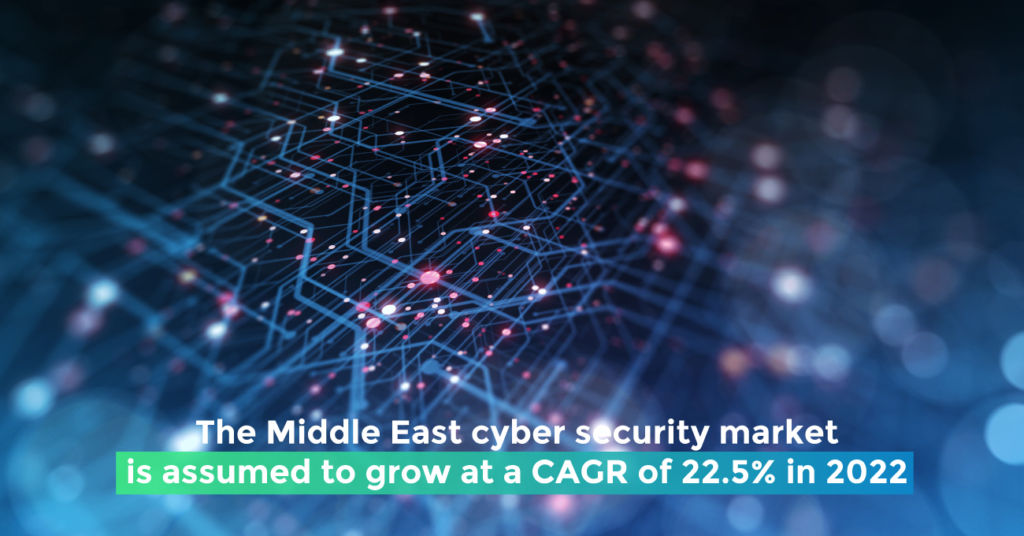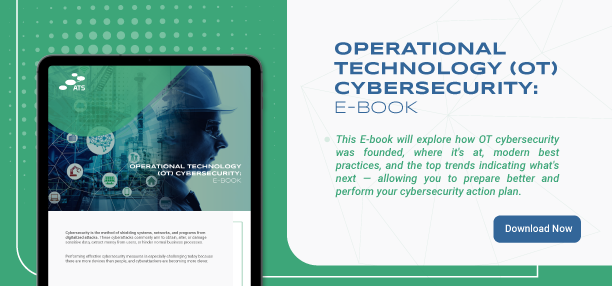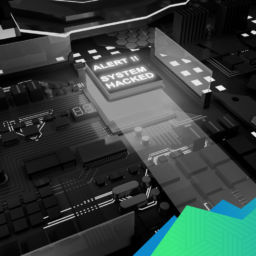IoT and OT Cyber Security Forecast in the Middle East for 2022
Cyber security has become a critical problem in the Middle East region and the UAE. The executives of these regions have been raising their spending on cyber security services/products/solutions to decrease security problems (e.g., Aerospace & Defense, Retail, and BFSI) and defend data from cyberpunks.
In this Middle East region, including areas such as Bahrain, Qatar, Saudi Arabia, and the UAE government, BFSI, and energy & utility companies are under cyber attacks and are a primary target for cyber attackers. Due to this, there is an immense demand for better security developments.
The GCC region has evolved as the primary target point for cyber attacks because of the area’s strategic and economic significance. In the GCC region, government, education, and BFSI initiatives are the most targeted sectors by cyber attackers.
The boost in cyber threats, digitization initiatives, and investment in homeland security are driving the market. According to the Middle East Cyber Security Market Research Report, the Middle East cyber security market is assumed to grow at a CAGR of 22.5% in 2022.
The Middle East cyber security demand is analyzed based on five components – security types, solutions, services, verticals, and countries.
The security types component is analyzed based on cloud security, wireless security, network security, and application security. Cloud security is one of the critical factors for organizations (small to larger). Adopting this security will help enterprises reduce capital expenditure, increase productivity, business agility, ease of adaptation to the market, and data protection. The cloud security market revenue will reach $20.20 billion by the end of 2022.

The services segment is analyzed based on consulting, managed security, and integration services. The services market revenue is expected to surpass $34.37 billion by 2022.
Based on Pwc Digital Trust Insights 2022-Middle East Findings Report, companies in the Middle East are continually investing in their cyber security requirements – which is a very good thing especially in 2022. Fifty-eight percent of Middle East companies anticipate a peak in cyber spending in 2022 compared to 43% last year. More than a third (31%) predict 10% or more; only 10% percent said that last year. Companies know that risks are increasing, with more than 43% indicating a surge in reportable incidents next year above 2021 levels.
Already, 2021 has turned out to be one of the most harmful on record years for cyber security. Evermore sophisticated cyberpunks are exploring the dark corners of our systems and networks, seeking and finding susceptibilities. Whatever the nature of a company’s digital Achilles’ heel — an unprotected server is holding 50 million records, for example, or a fault in the code managing access to crypto wallets — attackers will use every means at their end, traditional as well as ultra-sophisticated, to manipulate it.
The results for an attack increase as countries in the Middle East region’s systems’ interdependencies grow more and more complicated. Critical infrastructures are specifically vulnerable. And yet, many of the breaches we’re seeing are still preventable with proper cyber approaches and robust controls.
Here are key IoT and OT cyber security challenges and new improvements that we will see in the Middle East in 2022
Over the years, cyber threats and attacks have been increasing, but prevention, regulations and cyber planning has been improved as well in the Middle East region. With new challenges to cyber security happening in 2022, there are also new improvements that will be adopted to prevent these cyber attacks.
We have compiled this brief prognosis below, gathered from our research done from cyber security authorities and sources online in the Middle East, to give an overview of new cyber security threats and advances that we will see in 2022.
Rise of geopolitical threats in 2022
With the constantly evolving geopolitical condition in the Middle East, taken from research and sessions done by the Council on Foreign Relations, we can anticipate new levels of APT action. This action will target critical infrastructure, including shipping, power, and communications.
The cost of cyber attacks will go up
In the last few years, the average ransom demand in the region has increased by USD 500,000 (pre-negotiation). This number is anticipated to increase this year, based on the increase in ransom demand from cyber attacks that have happened in other parts of the world over the past few years.
According to a recent report from Fortune in February of this year, governments around the globe saw a 1,885% rise in ransomware attacks, with the healthcare industry facing a 755% increase in those attacks in 2021. JBS USA, the world’s largest meat supplier, paid $11 million in Bitcoin ransom to attackers in May 2021 and is an example of a high increase in ransom demand compared to attacks done in previous years. The FBI attributed the attack on JBS to REvil, a Russian-speaking ransomware gang, and with the current situation in Russia, with their recent military actions on Ukraine (as of press time, this article was written in February 2022), ransomware gangs based in Russia can target more critical infrastructures, not just in the US but also in the Middle East and demand higher ransom to finance their operations as they get cut off from the global economic system due to escalating tensions among countries.

Cyber attacks and reconnaissance threats on IoT and OT Deployments will heighten
Based on cyber resilience reports from global cyber security source Cyber Series, there will be an increase in cyber threats in the UAE, Saudi Arabia, Oman, Turkey, Qatar, and Bahrain in 2022, which is expected, based on the upward trajectory on cyber attacks in these countries over the past few years and the constant evolution of cyber attack methods by attackers. Health and safety departments, ICS, SCADA, PLC, IoT devices, and networks – the usual targets by cyber attackers – will continue to see an increase in cyber threat activity.
Network and device vulnerability will get more lookout from cyber punks and companies
Based on studies and reports compiled from 2021, cyber punks will attempt and exploit the network and device vulnerabilities. Companies should pay more attention to patching and vulnerability scanning schedules. The region’s government infrastructures are one of the most targeted sectors for cyber attackers. Second, are finance and retail. Cyber criminals use phishing to infiltrate their victims within these industries and it is important to prevent this from happening with a solid cyber security plan in place.
Supply chain vetting and internal security methods will turn mainstream and streamlined
On a good note, albeit an increase in cyber threats this year, a better plan of prevention and streamlining will be seen applied to supply chain infrastructures in the Middle East. Research from the World Economic Forum reported that the supply chain situation this year will be stabilized across the Middle East region with new cyber security methods and processes adopted that will deepen resilience and assure that these are not disrupted from within.
Compliance and standards shift
Compliance orders will shift from a voluntary activity to mandatory for all sectors. This means that regional governments will ask enterprises to ramp up their cyber security actions to align with current criteria like IEC 62443 or new ones that will be passed.

2022 – The year of cyber threat intelligence
Towards the second half of 2021, many companies were seen investing in cyber threat intelligence feeds. Based on a recent publication by PwC MiddleEast, this activity will boost in 2022 as regional companies strive to enhance their threat hunting and detection abilities. In a recent article on TechCrunch, security operations are seen as maturing, with enterprises having made significant investments in security infrastructure. C-level management will become increasingly involved in cyber security decision-making, and studies show that global cyber security spending will exceed $1.75 trillion from 2021-2025, with countries in the Middle East assigning their annual budgets to cyber threat intelligence spending to protect their respective critical infrastructures.
Attack surfaces will continue to grow
A recent market research from cyber security global monitor Mordor Intelligence, shared that adoption of digital transformation, transformative digital technologies and automation across sectors will result in attacks that will emerge for threats to exploit. Digital transformation in industries such as manufacturing should be dealt with care and perseverance to avert these from openings in the overall cyber security posture.
In Summary
As people become more and more dependent on modern technologies, the chances of being struck by cyber security attacks increase. Like hacking and losing personal information, cyber attacks can have devastating effects on any business.
The COVID-19 pandemic has brought digital modification for many enterprises globally. With the new remote working systems, the dangers and threats to confidential data have increased.
Cyber security is one of the most significant threats for companies and a critical priority concern in the global risk landscape. It is required that the entire company, including all workers, are trained and prepared to defend themselves against cybercrime. A prepared IT Department will not be enough to protect a company. OT cyber threats are a serious concern as they may harm people’s lives.
ATS offers you a fusion of technology products and services – a partnership to improve your company’s performance and protect your confidential data. We work across numerous industry sectors and tailor-make telecom solutions for the energy, defense and government.

















